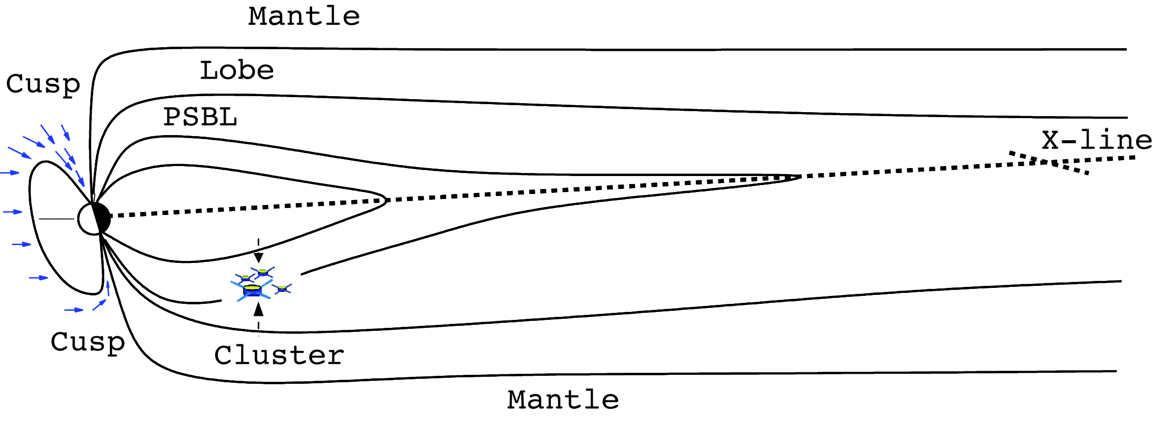

Creation of high-speed ion beams in near-Earth space
Earth’s magnetic field deflects most solar wind, a continuous flow of matter called plasma, expelled by the Sun. However, there are two regions located around the magnetic poles, known as polar cusps, where solar particles can precipitate along magnetic field lines towards Earth’s magnetic poles (step 1).
At each pole, a significant fraction of these particles bounce back along the magnetic field lines and populate the plasma mantle, a plasma layer located on the night side of the Earth, inside the magnetosphere and along its boundary (step 2).
Under the action of electromagnetic forces, plasma contained in the mantle drift equator-ward, across the tail lobe and the plasma sheet boundary layer (PSBL) towards the current sheet region along the tail axis. Then, there exist a few localized regions in the current sheet called resonant locations (step 3), where ions acquire kinetic energy along the magnetic field. The further these resonant locations are, the more energy the ions acquire. Such accelerated ions are beamed back to Earth, from the magnetic equator, into the PSBL, towards the poles, in a kind of elongated parabolic flight along terrestrial magnetic field lines (step 4).





